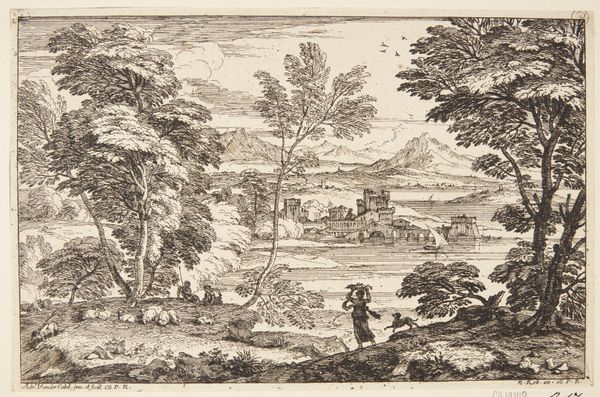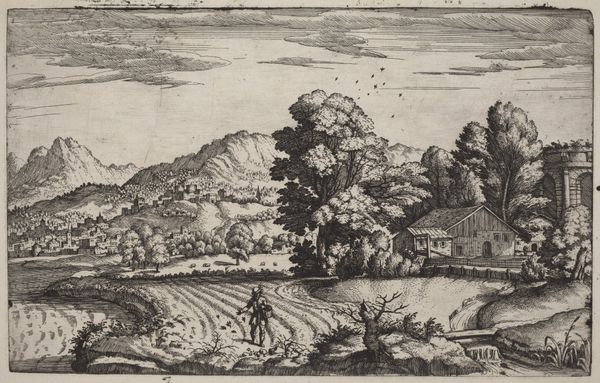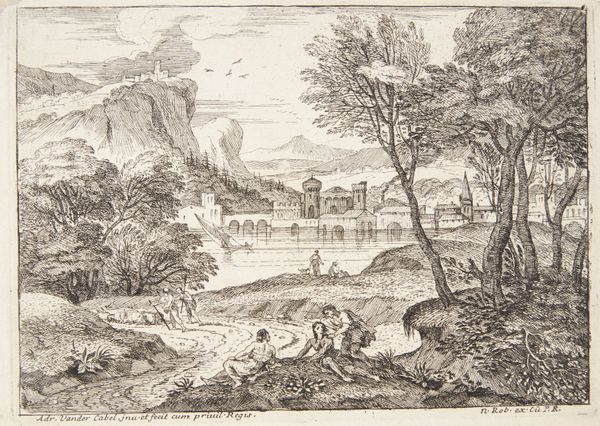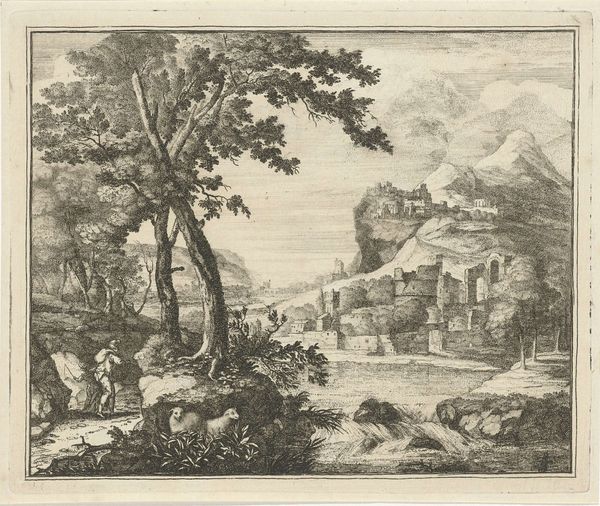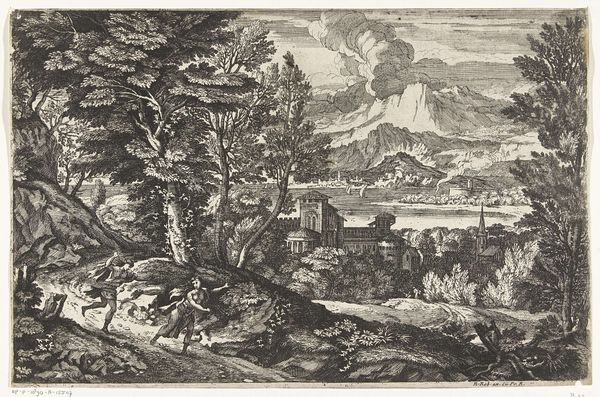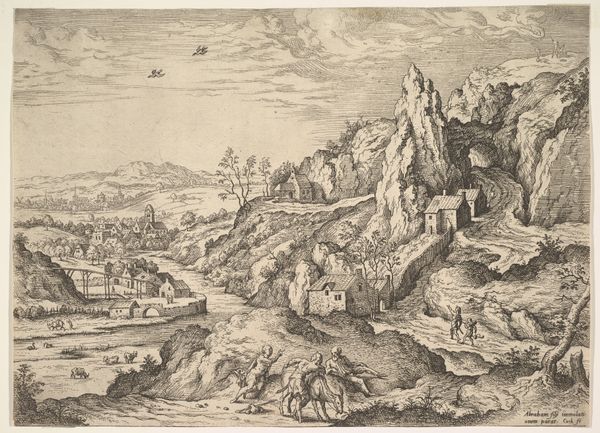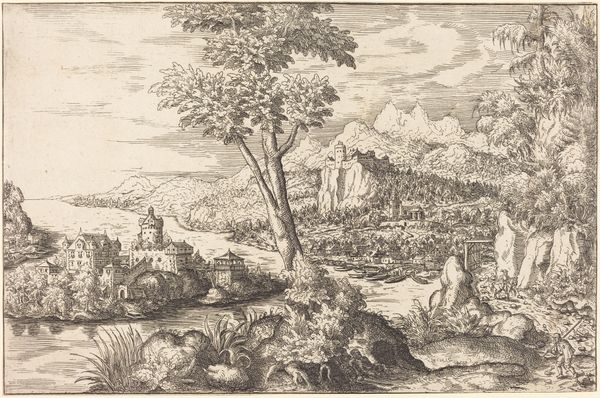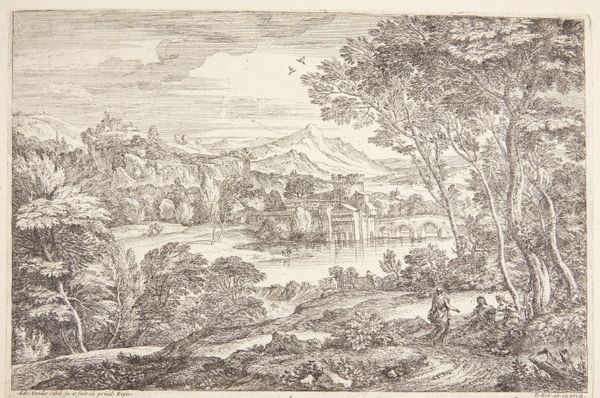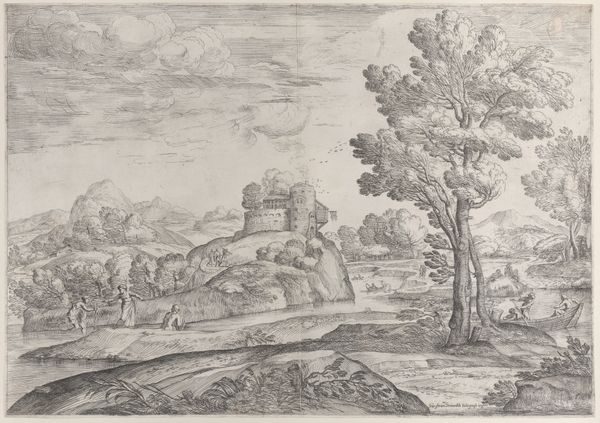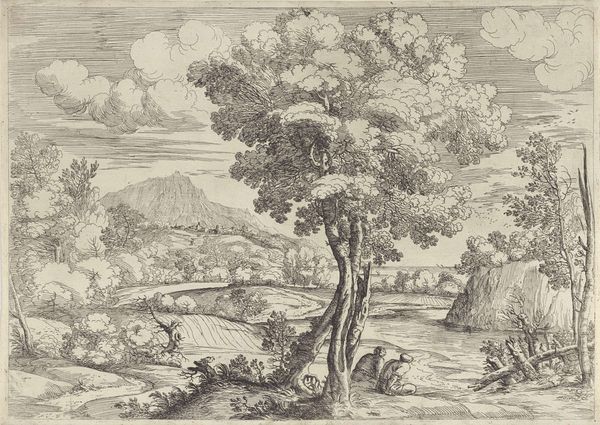
Landskab med en mand og to kvinder under et træ 1630 - 1705
0:00
0:00
print, etching
#
dutch-golden-age
# print
#
etching
#
landscape
#
figuration
Dimensions: 220 mm (height) x 333 mm (width) (bladmaal)
Curator: Oh, it's so detailed! It feels almost like peering into a memory, slightly faded, but full of life. The lines dance across the page, creating this fantastical, dreamlike vision of nature. Editor: You’ve hit upon something interesting, yes, because this is an etching by Adriaen van der Kabel, titled "Landscape with a Man and Two Women Under a Tree." Van der Kabel was a Dutch Golden Age artist, working roughly between 1630 and 1705, and his landscapes often reflect that period's idealized views of nature. Etchings like this were really accessible art for a growing middle class. Curator: It makes sense that this was for a growing middle class because it's just incredibly inviting, with all its activity, and like many of these landscape images it places figures as staffage, mere enhancements in a landscape view to attract the observer's eye and curiosity. I love the way the dark, tangled trees in the foreground frame that lighter, almost ethereal scene of mountains and water. It's as though we are witnessing it all unfold from a secret hiding spot. The lines used to describe the nature on display appear to grow from dark thicket into light open air. Editor: The strategic placement of darkness and light is spot-on. Van der Kabel uses etching to its full potential, creating a complex sense of space. The etching as a means of art also suggests something broader about that Dutch impulse to democratize representation; what was the purpose of this kind of accessible art? It was less about depicting reality and more about creating this visual ownership for its viewers. A new landscape, literally, of art and life! Curator: "Visual ownership," I love that! Because it does feel like an invitation to claim this as your own personal vista. The way those three figures are placed under the tree gives it a touch of narrative possibility as if there's a little play unfolding before us. Editor: Absolutely. While landscape painting was becoming increasingly important, there was some degree of separation from classical, ideal views of what was art's more public functions, especially religious art, that landscape painting offered to those in the Low Country region, because of that culture's changing sociopolitical and artistic contexts. So these images do also convey this more democratic, less hierarchical positioning of art in people's lives. Curator: It's amazing how a simple scene, rendered in ink, can hold so much cultural weight. Looking at it, I feel connected to that desire for visual ownership and how people see the landscape around them. Editor: Precisely. Art opens up an exchange, after all. Thanks for noticing these fine details, for sparking such curiosity on an etched vista.
Comments
No comments
Be the first to comment and join the conversation on the ultimate creative platform.
